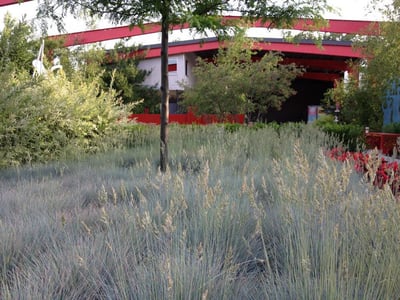
Urban ecological design is a critical discipline if we want to bridge the divide between city infrastructure and the natural world.
So, exactly what is urban ecological design, you’re wondering? Well, that starts with asking: What’s wrong with our cities in the first place?
You don’t need to read City Mouse, Country Mouse to understand the divide between our sparsely populated rural places and our bustling urban spaces, complete with all the conveniences of modern times.
(Although if you haven’t read that book, you should – whether or not you have children. It’s a classic, mostly because, mice with clothes.)
The problem is that too many people see cities as centers of civilization, exclusive of the environment. On the other hand, nature is an idyllic escape that simply can’t exist inside metropolitan boundaries.
Frankly, we don’t care for that way of thinking. The only way we’ll heal the environment and transform cities into healthy places to live is to meld the two. That’s where urban ecological design comes in.
The Problem with Our Cities Today

A frightening raft of challenges faces environmentalists today.
Our carelessness and at-all-costs growth has resulted in an approach to urban life that deprioritizes human health and the planet’s well-being in favor of speed, convenience and profit.
Till now, we haven’t placed nearly as much emphasis on urban ecological design as we need to.
That’s not, however, how you build a healthy urban landscape. As CityLab points out, you have to take many factors into account, including:
- Whole communities
- Conscious mobility
- Restorative architecture
- Thriving landscapes
- Integrated infrastructure
- Nourishing food systems
- Supportive society
- Healthy prosperity
As you can see, these values run the gamut from good travel choices, healthy food systems, social support, authentic profit-building strategies and more.
Nestled among them, however, you will see both restorative architecture and thriving landscapes – both critical components of urban ecological design.That’s because people simply cannot live without a healthy environment around them. Exiled from nature and surrounded by pavement is no way to live.
Unfortunately, too few of these values are currently met. So what do we do?
Focus on Urban Ecology First

First and foremost, we must focus on the environmental health of our cities.
For too long, the byproducts of human activity have flowed into nature in the form of solid municipal waste, greywater, sewage and industrial wastewater. Shortsighted energy strategies have polluted our air and habitats on the ground.
Combined sewer overflow events have resulted in poisoned wetlands, widespread disease and countless cleanup efforts … which are, like, super gross.
If we want healthy cities and a healthy planet, it’s time to clean those up. That means a dedicated stormwater management plan dictating how you’re going to detain and retain stormwater after rainstorms and snowfall.
It also means urban ecological design programs that build healthier environments in, of and for our cities. That means more than a green space here or there, it means integrated solutions such as green roofs and rooftop gardens. It means reimagining building principles so that they prioritize plant and animal health from the get-go.
And of course, it means placing a premium on human health as well.
Focus on Human Health Second

The good news is, if you make the effort to enhance urban ecological design, you automatically improve human health.
Those stormwater strategies we discussed above reduce the prevalence of disease, while integrating green space into urban jungles makes people more serene, and can actually form a pillar of mental health treatment.
There’s more. For instance, did you know that reducing the urban heat island effect can substantially reduce human health impacts such as cramping, heat stroke, breathing trouble and even mortality – usually in the elderly.
Old lives matter. For real.
At its most fundamental, though, the power of urban ecological design stems from the whole “design” part of the phrase. It’s time to quit with the half measures and start designing real, long-lasting solutions that make increase the health of new buildings and retrofitted systems alike.
That, in turn, requires the kind of expertise we’re known for here at Ecogardens. If you’d like to find out more about creating healthier cities and designing urban ecologies that work, we’d love to help.
Get in touch.

